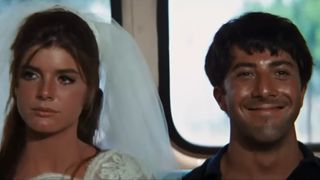Whatever you think the 1960s to have been like or looked like, think again. The tumultuous decade is multi-faceted in all manner of ways, including movies. But which films of the 1960s are actually the best?
In a decade characterized by changing societal norms, not to mention the civil rights movement and the political quagmire that was Vietnam, movies of the 1960s similarly reflected a global community in flux. Avant-garde foreign imports from Japan, Italy, France, and elsewhere took attention away from tried-and-true American styles. All the while, filmmakers saw their craft defied by a new, cheaper alternative of entertainment: television. Rather than offer a higher level of spectacle than TV’s miniscule budgets could match, however, films of the decade sought to challenge audiences with more subversive stories that redrew the boundaries of acceptability.
Like the 1950s before it, the 1960s foresaw the moral ambiguities of the near future. As the parochial Hays Code lost its vise grip, the sudden explosion of New Hollywood – already precluded by the French New Wave – gave filmmakers more creative authorship, allowing them to reflect in their films a hip counterculture that permeated in cities, communes, and university campuses everywhere.
With so many classic movies to name, here are just 32 of the best movies of the 1960s.
32. Batman (1966)

Holy cinema, Batman! Originally engineered by producer William Dozier simply to promote the TV series, the 1966 film Batman (directed by Leslie H. Martinson) now represents camp art in all its extravagant glory. Starring Adam West in the role that made him famous, the Caped Crusader does battle against Gotham City’s most nefarious evildoers who’ve teamed up as the United Underworld. While it is by no means the best superhero movie ever made, its summation of the famous television series – all blown up for the big screen – makes Batman one of the most colorful, most outrageous, and indeed, most fun commercial films in a challenging decade. Truly there are some days you just can’t get rid of a bomb.
31. Barbarella (1968)

A cult film of the highest order, Jane Fonda stars in a B-grade sci-fi gem whose appeal is the fact that, well, it has Jane Fonda being a total hottie in space. (And Barbarella is so genuinely watchable because of Fonda’s game-for-anything zeal.) Based on the French comic book series, the movie follows Barbarella (Fonda), a space traveler sent to find a scientist with a weapon capable of wiping out humanity. After stars like Brigitte Bardot and Sophia Loren turned down the part, Fonda hesitated over its sexualized nature; at the time, Fonda was at the center of two nudity scandals involving the films Circle of Love and The Game Is Over. But Fonda was sold when she was told by director Roger Vadim that sci-fi will soon be a prestigious genre. With Star Wars still nine years away, Vadim was pretty much right, even if Barbarella isn’t as big of a franchise today.
30. The Umbrellas of Cherbourg (1964)

In Jacques Demy’s unforgettable romantic sung-through musical, a young French couple are eager to start forever after until they are torn apart by the Algerian War. When they inevitably reunite, the frigid temperatures reveal a once-heated passion gone cold. Catherine Deneuve and Nino Castelnuovo co-star as an enchanting onscreen pair who represent the universal thrill of being young and in love, the tragedy of finding love too early, and the bitter acceptance that life will not always work out the way you plan. Of the movies that make up Demy’s romantic trilogy – including Lola (1961) and The Young Girls of Rochefort (1967) – The Umbrellas of Cherbourg stands tallest as a movie truest to the bittersweet ephemera of young love.
29. Onibaba (1964)
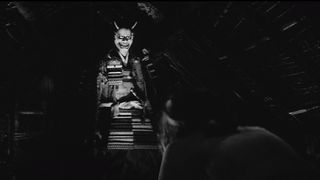
It’s a movie so frightening that it scared even William Friedkin, the director of The Exorcist. A retelling of a Buddhist parable involving a cursed mask that punishes those who wear it, Onibaba follows two women who lure wandering samurai to kill them and sell their armaments for money. When a man gets between them, ancient feelings like envy and rage swirl like the winds of a dark unholy storm. A macabre picture with supreme eldritch energy, this elaborate metaphor for Japan’s residual traumas from the atomic bombs takes on extra meaning when you know that writer/director Kaneto Shindō was from Hiroshima. Onibaba was one of Shindō’s many pictures grappling with the horrors of nuclear annihilation and his own personal reality of seeing his home leveled and its survivors left with irremovable wounds.
28. Easy Rider (1969)

The American New Wave began full throttle with Easy Rider, a modern Western if there ever was one. Directed by Dennis Hopper and written by Hopper with Peter Fonda and Terry Southern, Easy Rider follows two motorcyclists (played by Hopper and Fonda) who ride from the American South and venture westward with money earned from a lucrative cocaine deal. A landmark counterculture epic, Easy Rider single-handedly shaped our collective vocabulary for the open road as the last frontier for adventure, and the only place left on Earth to find a sense of identity and freedom.
27. The Apartment (1960)
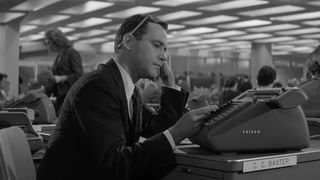
If only walls could talk. In Billy Wilder’s 1960 rom-com The Apartment, Jack Lemmon plays an ambitious insurance employee who, in the hope of rising up in his workplace, allows his senior coworkers to use his Upper West Side apartment for their extramarital affairs. Things get complicated when Lemmon’s Bud falls in love with Fran (Shirley MacLaine), who is having an affair with Bud’s own boss. Loosely inspired by the 1945 British film Brief Encounter and a real-life Hollywood scandal involving a producer’s affair that happened out of their employee’s apartment, The Apartment is a delightful comedy about never being too close to the action.
26. To Kill a Mockingbird (1962)

Harper Lee’s seminal novel from 1960, about a principled lawyer who defends an innocent Black man accused of sexual assault, was masterfully adapted for the screen two years later by director Robert Mulligan. Starring Gregory Peck as Atticus Finch and Mary Badham as his young daughter Scout – whose perspective provides the story’s primary point of view – Mulligan’s film version has earned acclaim as an American classic in its own right, being a tender and stirring study of growing up in an environment of prejudice. Through Finch’s unforgettable defense monologue (with Mulligan’s camera wisely taking the perspective of the jury) To Kill a Mockingbird has given untold generations an instruction in standing up for what’s right, even when justice is in short supply.
25. Night of the Living Dead (1968)
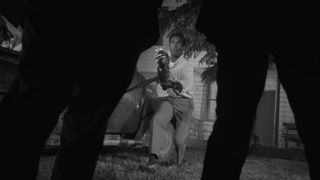
Before The Walking Dead, there was George Romero’s Night of the Living Dead, which not only introduced zombies to the American pop culture lexicon but arguably did the genre best. Set in rural Pennsylvania, seven survivors hole up in a farmhouse as hordes of flesh-eating corpses have suddenly come to life everywhere. Not only did Night of the Living Dead write the playbook for all zombie horror stories, but its casting of Black actor Duane Jones (as leading man Ben) was both revolutionary and pointedly political, forever turning zombies into a dynamic and fluid metaphor for what man deems monstrous in its heartbreaking twist ending.
24. Planet of the Apes (1968)

Loosely based on Pierre Boulle’s 1963 novel, Franklin J. Schaffner’s film version Planet of the Apes stars Charlton Heston as an astronaut who lands on a strange planet where mankind is primitive, and talking apes have assumed dominance as the most intelligent species. While Planet of the Apes spawned a franchise, the original by Schaffner is a towering piece of science fiction that is both technically spectacular and spiritually foreboding. All these years later, Planet of the Apes still hits hard as a powerful warning against mankind’s arrogant regard to its place on the food chain.
23. The Manchurian Candidate (1962)
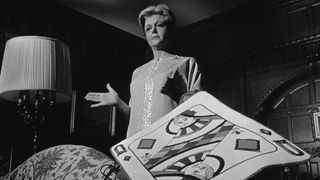
Based on Richard Condon’s novel, this dark psychological thriller by John Frankenheimer is one of the defining pictures of the Cold War that capitalized on the era’s prevalent paranoia over enemies lurking from within. Released just a year before JFK’s assassination, the movie follows a Korean War veteran, Raymond Shaw (Laurence Harvey), who is unknowingly brainwashed by Communists and is sent back to the United States to kill a presidential candidate. Also starring Frank Sinatra, Janet Leigh, and Angela Lansbury, this formative spy thriller’s abundant politicking and conspiring permanently set the bar for all spy thrillers after it. Its innovations in the genre are still seen in modern likeminded movies, spanning The Bourne Identity to Captain America: The Winter Soldier. An equally formidable modern remake released in 2004, with Denzel Washington, Liev Schrieber, and Meryl Streep as its stars.
22. Barefoot in the Park (1967)
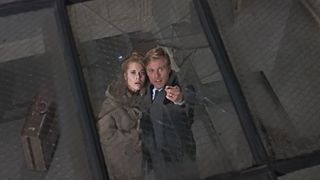
Jane Fonda and Robert Redford have never been funnier or hotter than as a newlywed couple who come down from their honeymoon bliss to deal with reality’s sense of humor. After moving into a five-flight Manhattan walk-up apartment, free-spirited Corie (a delirious Fonda) and somewhat more uptight Paul (Redford, boasting sharp comic timing) learn what it actually means to have and to hold when their first few months together aren’t what either of them imagined. Though the plot is light as a feather, the film – based on Neil Simon’s play and directed by Gene Saks – endures thanks to the radiant charisma of its handsome cast.
21. Mary Poppins (1964)
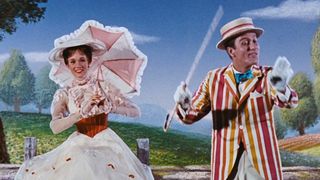
One of Disney’s biggest hits emerged in the 1960s, with Julie Andrews and Dick Van Dyke dancing and singing about the virtues of living a more engaged family life. In Edwardian London, a magical woman flies from the skies to answer the Banks childrens’ call for “The Perfect Nanny.” She is Mary Poppins (Andrews), a most mysterious entity who is both gentle and firm, and exactly the spoonful of sugar the Banks family needs to be whole again. Technically dazzling and wholesome at heart, Mary Poppins stands as one of Disney’s most iconic and successful live action movies ever, and for good reason. What else is there to say but, “Supercalifragilisticexpialidocious!”
20. Tokyo Drifter (1966)
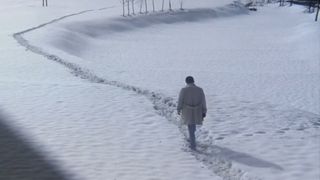
Seijun Suzuki’s homage to gunslinger Westerns comes in the form of his unbelievably stylish gangster film Tokyo Drifter, about a reformed hitman named Tetsu (Tesuya Watari) caught in the middle of rival gangs trying to consolidate power. Suzuki, known for his eccentric visual style, was first forced by the studio to tone down his onscreen sensibilities; the studio gave him a small budget to make sure Suzuki color within their lines. In retaliation, Suzuki sourced inspiration from 1950s musical films, absurdist comedy, and the emerging pop art scene to create his most surreal picture up to that point. This philosophy of rebellion-as-declaration seeps through Tokyo Drifter’s pores, its restrained maximalism contained in its frames create an experience where you can’t forget how it feels even if you can’t figure out what’s going on.
19. Butch Cassidy and the Sundance Kid (1969)
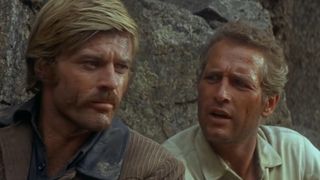
Georgy Roy Hill’s Western classic, written by William Goldman, co-stars Paul Newman and Robert Redford as cinema’s coolest, most untouchable outlaws in their desperate escape to Bolivia. Do they survive? The answer to that is less interesting than the rich, riveting journey that Butch Cassidy (Newman) and Harry Longabaugh, a.k.a. “Sundance Kid” (Redford) embark on throughout the film, being partners in crime whose tight bond make them the patron saints of brotherhood and bromance. Though unpopular in its release, Butch Cassidy and the Sundance Kid has won reverence as a film that testifies that the greatest reward aren’t the riches you abscond with, but the experiences you can collect with those who matter most.
18. A Hard Day’s Night (1964)
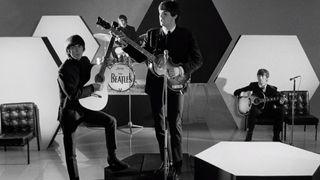
All music videos, rock star documentaries, concert films, and TikTok reels owe a debt to A Hard Day’s Night. A kaleidoscope of comedy and music, Richard Lester’s film, full of quick cuts and hand-held hysteria, captures The Beatles at the apex of Beatlemania. But rather than being an indulgent, self-important documentary about fame-induced drama and fatigue, A Hard Day’s Night sees the Liverpool rockers causing a ruckus everywhere they go – with nary a real story in sight. From trolling interviewers with Marx Brothers-like routines to escaping screaming fans who move like hornet swarms, A Hard Day’s Night is less Taylor Swift: The Eras Tour and more French New Wave in its freewheeling mischief and ingenuity.
17. The Birds (1963)

After Alfred Hitchcock, we never saw flocks of birds the same way again. In this iconic 1963 horror film, based on a 1952 short story by Daphne du Maurier and loosely inspired by a freak mass bird attack in the town of Capitola, California two years earlier, aggressive birds terrorize the residents of a sleepy town. While killer crows and pigeons may sound corny on paper, a filmmaking sovereign like Hitchcock delivers a stone cold horror classic in which nature still maintains its dominance no matter mankind’s scientific progress. Between its masterful use of silence and early special effects craftsmanship, The Birds will never stop taking flight – and making us run for cover.
16. The Graduate (1967)
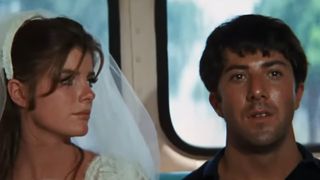
Mike Nichols’ romantic dramedy, an early independent film hit, expertly captured the restless spirit of ‘60s youth in its story about a college graduate (Dustin Hoffman) who starts an affair with an older woman (Anne Bancroft) while falling for her daughter Elaine (Katharine Ross). To pull off its unforgettable ending, in which the two lovebirds slowly realize the crushing magnitude of their actions, was a stroke of genius on Nichols’ part. By simply not telling his actors what to do next after they get on the bus, their physical fatigue mirrors spiritual ambivalence. As both Hoffman and Ross cease smiling over a bafflingly long take, their tiresome expressions reveal their characters’ uncertainty if love is strong enough to last.
15. Cool Hand Luke (1967)

One of many iconic American films to stand for counterculture defiance during the Vietnam War, director Stuart Rosenberg’s Cool Hand Luke stars Paul Newman as a Florida prisoner who refuses to let his chains hold him down. The film was written by Donn Pearce, whose own criminal background and two years in the chain gangs of the Florida Department of Corrections inspired both his novel and the film. Inspiring and stirring, Cool Hand Luke is practically an instructional video on how to keep composure and outsmart everyone else in a hostile place that wants to see you drop dead.
14. The Good, the Bad and the Ugly (1966)

Sergio Leone spent the 1960s defining Italian-made Westerns with his Dollars Trilogy, which follows the nomadic exploits of the Man with No Name (Clint Eastwood). In the final film after A Fistful of Dollars (1964) and For a Few Dollars More (1965), Leone’s picture follows three gunslingers – played by Eastwood, Eli Wallach, and Lee Van Cleef – who race to find buried Confederate gold during the American Civil War. While personal opinions vary on which of the trilogy are the best of the three, The Good, the Bad and the Ugly is simply too epic to ignore and remains arguably the most emblematic of all spaghetti Westerns. Between its memorable cinematography and operatic violence, action filmmakers have spent decades taking inspiration from Leone’s enduring masterpiece.
13. Rosemary’s Baby (1968)
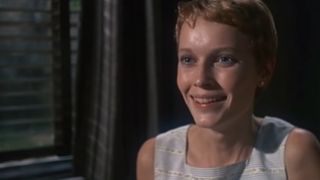
It is a cold comfort that you never see the baby’s face. In Roman Polanski’s psychological horror movie, Mia Farrow plays a young wife in Manhattan who suspects she may be targeted by her neighbors to give birth to something unholy. Polanski’s film – which also stars John Cassavetes, Ruth Gordon, Mauriece Evans, and Charles Grodin in his film debut – is a searing and ultra-dark thriller about a woman’s loss of agency (woefully ironic coming from Polanski) and how the 20th century society’s march towards secularism may be humankind’s undoing. Rosemary’s Baby was just ahead of the curve as hysteria over Satanic cults would quickly take a predominant place in newspaper headlines throughout the 1970s and 1980s.
12. Lawrence of Arabia (1962)
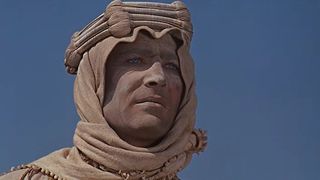
Can someone’s life be so epic, it becomes one of the greatest adventure movies ever made? 20th century British archaeologist, army officer, and writer T. E. Lawrence apparently lived such a life that became David Lean’s Lawrence of Arabia. Starring Peter O’Toole, who at the time was an unknown actor but was liked by Lean (from his 1960 film The Day They Robbed the Bank of England), the movie follows Lawrence across the Ottoman Empire during World War I. The movie itself explores Lawrence’s difficulty in reconciling with violence and his divided allegiance between Britain and his newfound allies within Arabian forces. A spectacular blockbuster in an era that didn’t make many of them, Lawrence of Arabia gallops with ferocity and a sense of adventure that won’t be seen until Raiders of the Lost Ark almost 20 years later.
11. High and Low (1963)
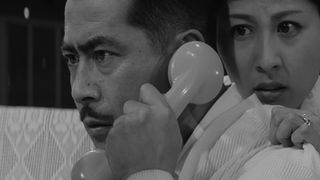
Akira Kurosawa is, for good reason, renowned as a director of everlasting samurai epics. But even when he zags from his own zigs, the famed artist maintains all his best traits, like his theatrical-like formality and strong-willed characters clashing against oppressive forces. Enter: High and Low, Kurosawa’s propulsive, finely-composed crime drama from 1963. Based on the novel King’s Ransom by Ed McBain, a wealthy executive (Toshiro Mifune) learns his son is kidnapped and held for ransom, kicking off a sweaty, forward-moving plot where time is of the essence. Exchanging samurai armor for crisp shirts and ties, Kurosawa ruminates on Japan’s postwar resurgence. Around him, the director saw Japanese society rapidly evolve into modernity. But at what cost?
10. From Russia With Love (1963)

A James Bond sequel that blows away even its all-important predecessor Dr. No out of the water, director Terence Young and actor Sean Connery reunite for From Russia With Love, this time to tell a story of Bond assisting a beautiful Soviet defector (Daniela Bianchi) to escape the clutches of SPECTRE. With MI6’s greatest spy immersed in Cold War tensions, From Russia With Love keeps rarified air as one of the finest Bond sequels ever made, being a gritty, sexy, and exciting blockbuster all at once. It also helps that the movie is underscored by one of the all-time greatest Bond songs, sung by crooner Matt Monro.
9. Pierrot le Fou (1965)
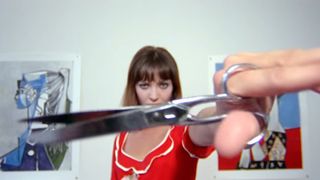
Jean-Luc Godard spent the 1960s asserting his place in the French New Wave through pictures like Breathless (1960), Vivre sa vie (1962), and Band of Outsiders (1964). But Godard’s maximum form came in 1965 with Pierrot le Fou, a vivid and colorful experimental road movie about a man (Jean-Paul Belmondo) who runs off with his child’s babysitter and ex-lover (Anna Karina) to leave their bougie world behind them. A pop art monument brimming with sensuality, doomed romance, and the debris of a demolished fourth wall, Pierrot le Fou didn’t just certify Godard’s auteur status, but plated it in gold.
8. Breakfast at Tiffany’s (1961)
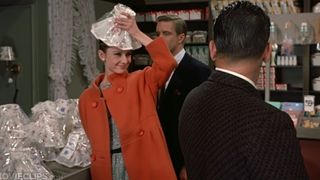
Audrey Hepburn didn’t just cement her stardom with director Blake Edwards’ Breakfast at Tiffany’s, she guaranteed her immortality. In this giant of a romantic comedy, Hepburn plays Holly Golightly, an eccentric socialite who falls in love with a struggling writer (George Peppard). Mickey Rooney’s racist portrayal of a Japanese neighbor aside, Breakfast at Tiffany’s is effervescent and chic, a film that takes the love in your heart and dresses it up in mod fashion. Hepburn’s look as Holly remains ubiquitous as a symbol of timeless beauty, and it’s hard to argue why. One glance from her into Edwards’ camera lens, and all of us are head over high-priced heels.
7. La Dolce Vita (1960)
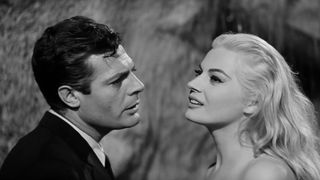
Frederico Fellini’s name is synonymous with fine Italian cinema, and La Dolce Vita stands as one of his most enduring hits. The film follows a celebrity journalist (played by an ultra-cool Marcello Mastroianni, oozing swagger in every frame) who spends a feverish week romping through Rome – an ancient city overrun by glitz and glamor – in search of something pure. Boasting a unique plot structure and mordant humor, La Dolce Vita relishes in the decadence of a prosperous postwar civilization whilst foretelling society’s poisoning by the toxicities of fame.
6. The Wild Bunch (1969)
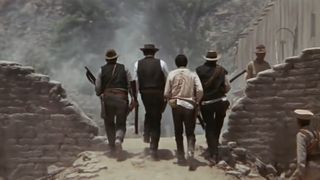
Sam Peckinpah gave Westerns its last hurrah with The Wild Bunch, a movie about aging outlaws who struggle to adapt to the modernizing 20th century and go out in a blaze of glory. While Westerns haven’t gone completely extinct, by the 1960s the genre had fallen way out of favor and have since never reclaimed that popularity. This only makes the bombardment of gunpowder bangs and bullet ricochets that underscore Peckinpah’s explosive finale in Agua Verde feel like a fireworks display commemorating the countless white hat heroes and black hat rogues who graced the silver screen since the beginning of Hollywood. After The Wild Bunch, Western movies rode off into the sunset, and they’ve never looked back.
5. 8 ½ (1963)
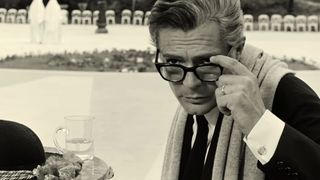
Italian filmmaker Frederico Fellini famously turned his camera on himself, somewhat, in his film about the struggles of maintaining authorship and individuality in a field subject to public scrutiny. In Fellini’s eighth movie (hence the title), actor Marcello Mastroianni stars as Guido Anselmi, a director desperately trying to maintain his identity through the rigorous, self-eroding process of helming a big budget science fiction picture. All the while, Guido thinks about the various women in his life. A surrealist meta black comedy that blurs the lines delineating kayfabe, 8 ½ is rightfully considered one of the greatest movies about making movies ever made.
4. West Side Story (1961)
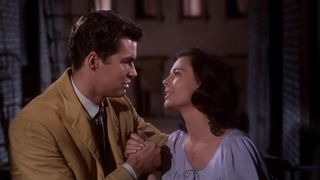
How do you solve a problem like Maria? In this modernized Romeo & Juliet set in New York City’s racialized street gangs, Natalie Wood and Richard Beymer play star-crossed lovers who fall in love while standing on opposite sides of a turf war. A juggernaut of a musical romance, the original 1961 version – directed by Robert Wise and Jerome Robbins – boldly treats the screen like a stage, with complex choreography, vivid color palettes, and dynamic camera movement that influenced the likes of Michael Bay (who praised the movie in a 2001 New York Times interview) and Steven Spielberg, who helmed his own remake in 2021. When you watch West Side Story, you’re a fan for life, all the way from your first cigarette to your last dying day.
3. Eyes Without a Face (1960)
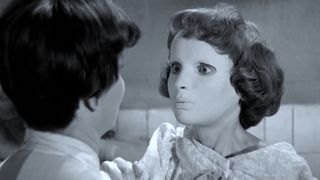
While Georges Franju’s seminal 1960 horror film Eyes Without a Face predates the majority of slasher movies, its harrowing tale and vicious violence set the standards later upheld by genre masters like John Carpenter and Wes Craven. Even still, Eyes Without a Face is unlike any horror movie you’ve seen, being poetic as it is grisly. The movie follows a renowned plastic surgeon (played by Pierre Brasseur) who ensnares beautiful young women to carve their flesh and repair his daughter’s tragic disfigurement. Édith Scob also stars as the doctor’s daughter, who dons a ghostly white mask that feels like an augur to future icons like Michael Myers and Jason Voorhees. Here, the gorgeous and the gruesome make unlikely cellmates.
2. 2001: A Space Odyssey (1968)

No movie defines the 1960s yet still feels out of time like Stanley Kubrick’s 2001: A Space Odyssey. Following up two mega-classics, Lolita (1962) and Dr. Strangelove (1964), Kubrick gazed into the stars with a majestic science fiction epic that adapts Arthur C. Clarke’s short story “The Sentinel.” The scope of 2001 is enormous, being a movie that spans literal eons from mankind’s primate origins to, what Kubrick predicts, our sophistication as a space-faring species. But no matter how far progress takes us, man is still subject to inexplicable violence. And so, on the Discovery One’s journey to Jupiter, the artificial intelligence HAL 9000 has some of its own ideas about survival than its meatbag masters might like. Beautifully composed and ominous in an otherworldly sense, 2001: A Space Odyssey leaped cinema forward with just a touch of a black monolith.
1. Psycho (1960)
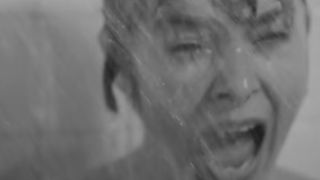
With the beautiful Janet Leigh, a bottle of Hershey’s chocolate syrup, and a pulsating all-strings piece by Bernard Herrmann, Alfred Hitchcock forged a cinematic masterpiece that looked deep into our psyches and unearthed what terrified us all. Overstuffed with red herrings, black comic irony, and dense symbolism that could fill a lecture on Freudian psychoanalysis, Hitchcock’s most recognizable movie endures as an imposing giant that redefined commercial cinema’s acceptability for taste and innovated conventions of the modern horror movie. Based on Robert Bloch’s book of the same name, the story is primarily set at the eerie Bates Motel, overseen by its eccentric proprietor Norman Bates (Anthony Perkins) who hides a dark secret. While Psycho has understandably spawned a franchise that includes the popular TV series Bates Motel, Psycho stands powerfully on its own as a movie that changed everything.
